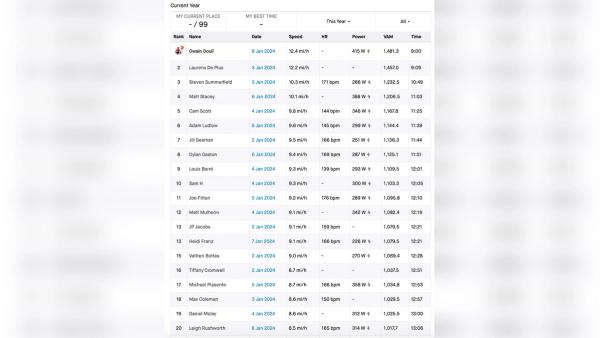The jerseys of the Vuelta a España explained
All you need to know about the jerseys and classifications of the third and final Grand Tour of the season
Pete Trifunovic
Digital Content Creator
© Velo Collection (TDW) / Getty Images
The winners of the 2022 Vuelta a España leaders' jerseys
The Vuelta a España might be the youngest of cycling’s three Grand Tours, however, this doesn’t mean that the Spanish three-week race is any less sought after with riders battling it out for its eye-catching leaders’ jerseys.
Just like the Giro d'Italia and the Tour de France, the Vuelta has a special jersey up for grabs for the leader of each of its classifications. This includes the main general classification, plus standings in the mountains, points and youth classifications. The rider leading each competition at the end of every stage will don the jersey for the following day of racing, before the wearer at the end of the race is crowned the overall winner.
Here’s a short explainer on each of the Vuelta a España’s jerseys, how they can be won and the history behind them.
The red jersey
Known locally in Spanish as the 'maillot rojo', the red jersey is awarded to the race leader after every stage of the Grand Tour. The leader of the race is the rider who has completed the race in the shortest overall time at that point.
To make things even more interesting in the battle for the general classification (GC), riders can also claim bonus seconds for finishing in the top-three places on a stage with 10, six and four seconds up for grabs on the line.
On top of this, each road stage, depending on the day, will offer up bonus seconds for the first three riders to pass through either an intermediate sprint or a categorised climb. These bonus seconds aren’t as profitable as stage finishes though, with six, four and two bonus seconds available.
Not only is the race younger than other three-week races on the calendar, with 2023 marking the Vuelta’s 78th edition, but the current form of the leader’s jersey has only been in place since 2010.
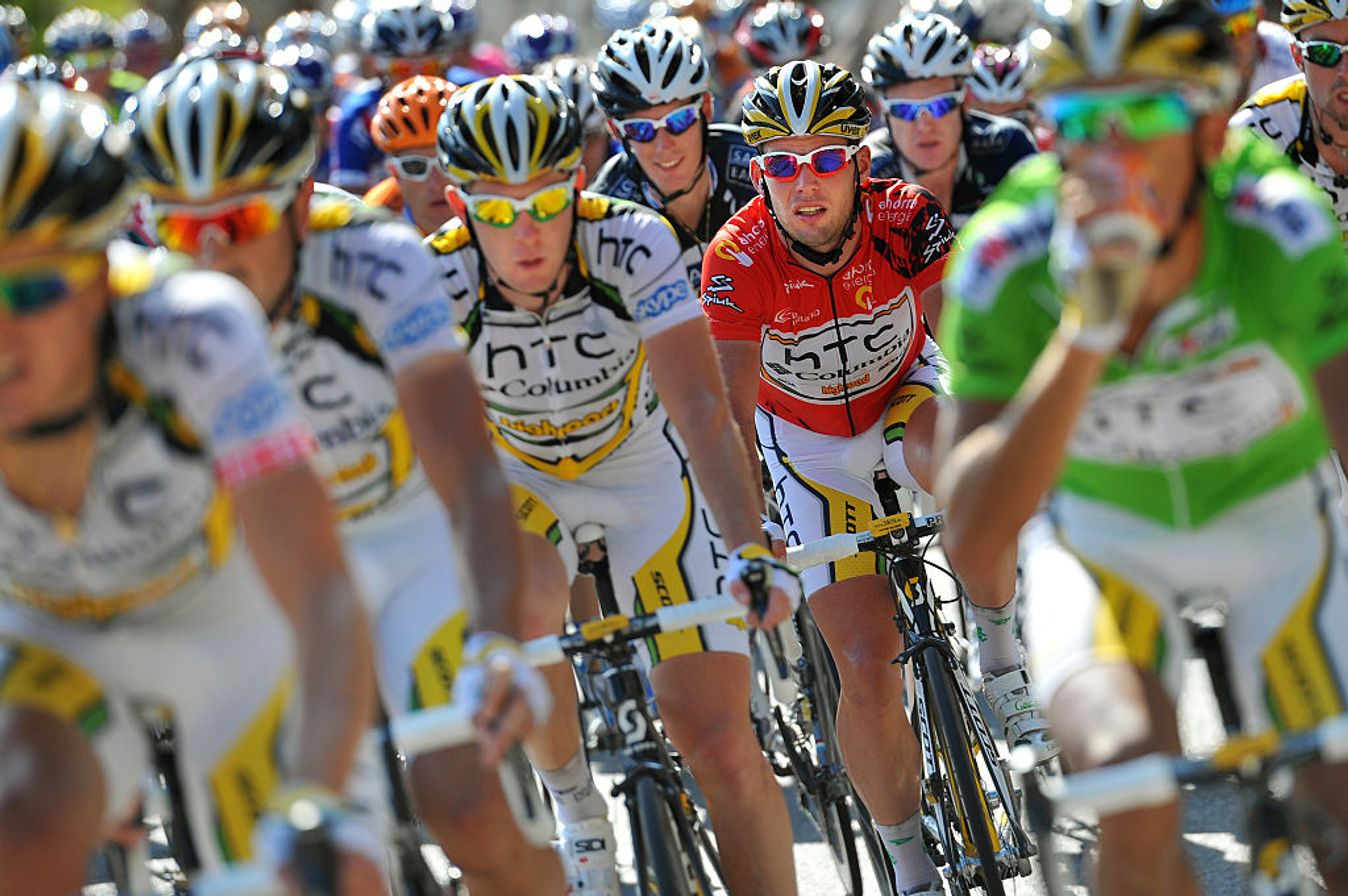
© Velo Collection (TDW) / Getty Images
Mark Cavendish was the inaugural wearer of the maillot rojo, brought in in 2010
When the race first ran in 1935, the race leader wore an orange jersey, with this temporarily switching to white in 1941 before the orange strip returned a year later. A white jersey with a red horizontal stripe was used in the late 1940s before El Correo, a Spanish daily newspaper that had brought the race back to life in 1955, switched it to yellow, in line with the iconic maillot jaune of the Tour de France.
The leader’s jersey changed to gold in 1998 before taking on its current colour in 2010. Mark Cavendish was the first rider to wear the red jersey, having won the opening stage of that Vuelta.
The polka-dot mountains jersey
Awarded to the rider who tops the King of the Mountain classification after each stage of the race, the mountains jersey is arguably the easiest of the leaders’ jerseys to spot in the peloton. A striking blue polka dot design on a white jersey is worn by the rider leading the standings.

© Velo Collection (TDW) / Getty Images
Richard Carapaz won two stages and the King of the Mountains jersey at the 2022 Vuelta
For the mountains classification, riders win points for being in the first few to summit a categorised climb. There are five categoría especial climbs during the three weeks in Spain, which offer between 15 and one point to the first six riders to pass over its peak - the maximum point allocations for the climbs considered the hardest. Another 44 climbs across the route are categorised, and graded from first to third-category peaks in descending order of difficulty with the number of points handed out accordingly.
In addition to being a categoría especial climb, the Col du Tourmalet, which peaks out at 2115m, is the highest climb in this year’s race, and as such, is given 'Cima Alberto Fernandez' status. This rewards the first six to summit it with a further mountain points bonus - 20 points are given to the first rider.
With 10 summit finishes awaiting the riders, the mountains classification is expected to be hotly contested at this year’s edition.
The jersey has been present since the first edition of the Vuelta in 1935 but was green until 2005. A brief spell in orange was followed by a switch to its current design in 2010, complimenting the traditional red polka dot jersey worn at the Tour de France.
The green points jersey
Although the Vuelta a España is typically known for its testing mountain stages, some fast men still brave the climbs in a bid for Grand Tour glory on the other side. The points classification rewards the rider that accumulates the most points at the end of each stage and at intermediate sprints. A dark green jersey, known locally as the 'maillot verde', is awarded to the rider leading the standings at the end of each stage.
When it comes to the number of points up for grabs on the finish line each day, stages are split into three categories. Flat stages are deemed the most valuable, with 50 points on offer for the winner and smaller amounts awarded to the next 14 finishers. Medium mountain stages use the same format but with 30 points awarded to the first rider over the line. Hard mountain stages and time trials follow suit but only warrant 20 points for the stage winner.
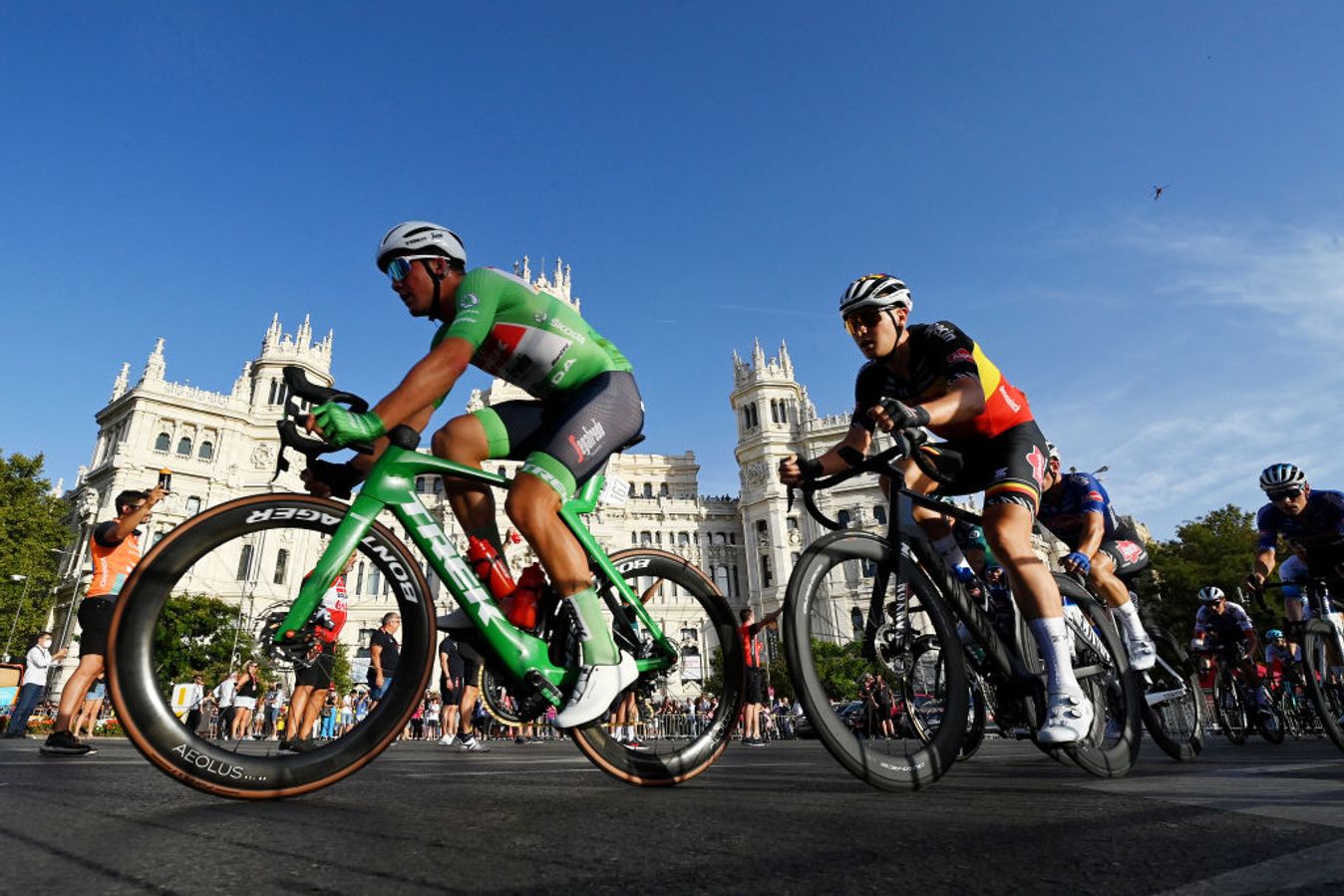
© Velo Collection (TDW) / Getty Images
Mads Pedersen won a hat-trick of stages on his way to maillot verde success in 2022
An intermediate sprint features in every stage except for time trials, with 20 points given to the first rider and 17, 15, 13 and 10 to the next four across the line.
Before 2021, the Vuelta awarded the same number of points at the finish line, regardless of the stage’s parcours, resulting in many GC contenders ranking higher in the standings than pure sprinters.
The white young rider's jersey
Awarded to the top-performing young rider in the general classification, the maillot blanco is on offer to any rider born after January 1, 1998, so those under the age of 26. The youngster with the lowest cumulative time during the race so far is awarded a white jersey to wear on the following day’s stage.
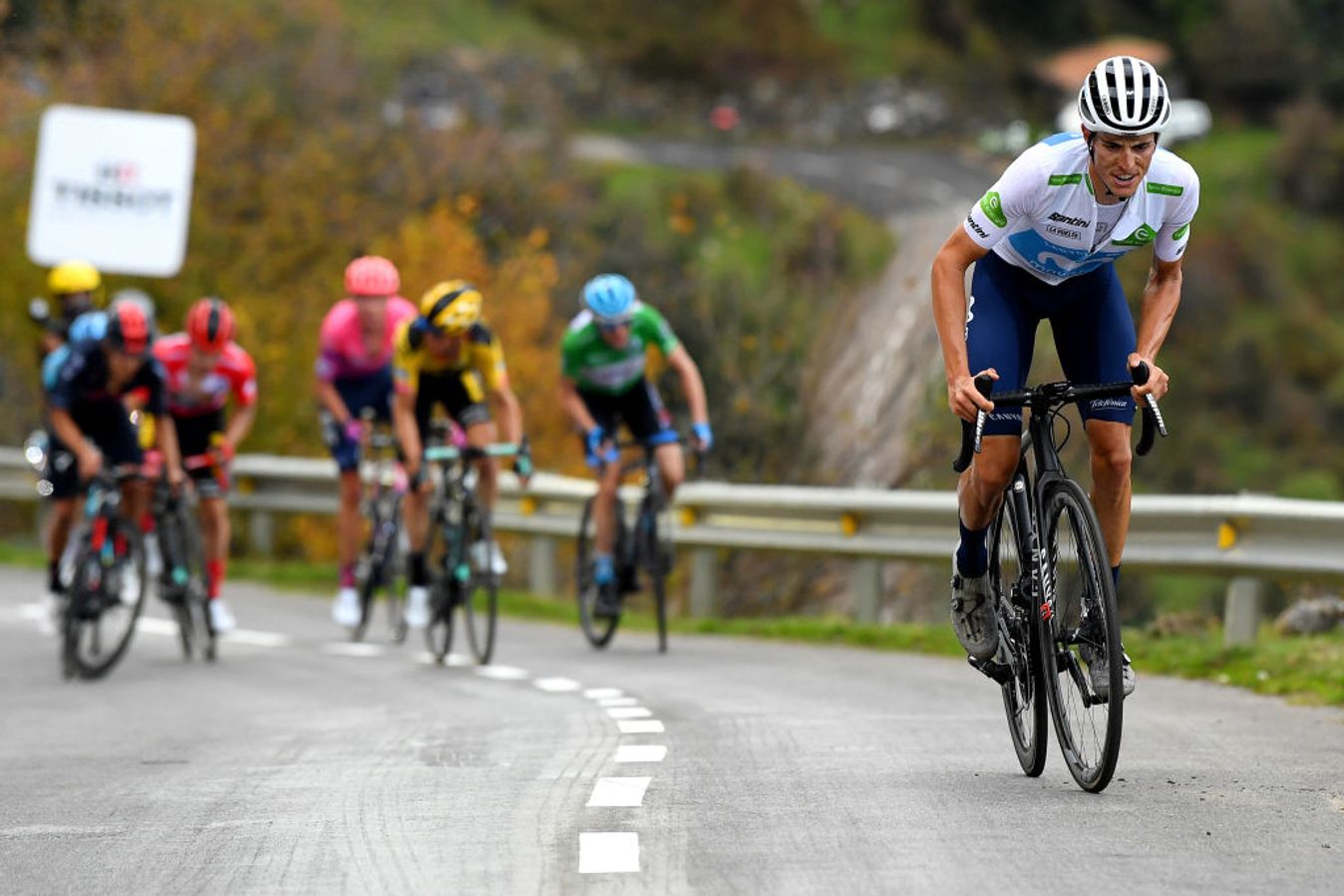
© Velo Collection (TDW) / Getty Images
Enric Mas is the only rider to win the young rider classification twice (2018 and 2020)
Working in the same way as the general classification, the young rider classification is typically won by a young rider who can keep pace in the high mountains.
The classification has only been present at the Vuelta a España since 2017, so it's a relatively new addition that brings the Vuelta jersey classifications in line with those at the Giro and the Tour.
To see who will take home each of these distinctive jerseys come Madrid, make sure to tune into ad-free coverage of the Vuelta a España, live and on demand on GCN+ from August 26 to September 17. As always, territory restrictions will apply.
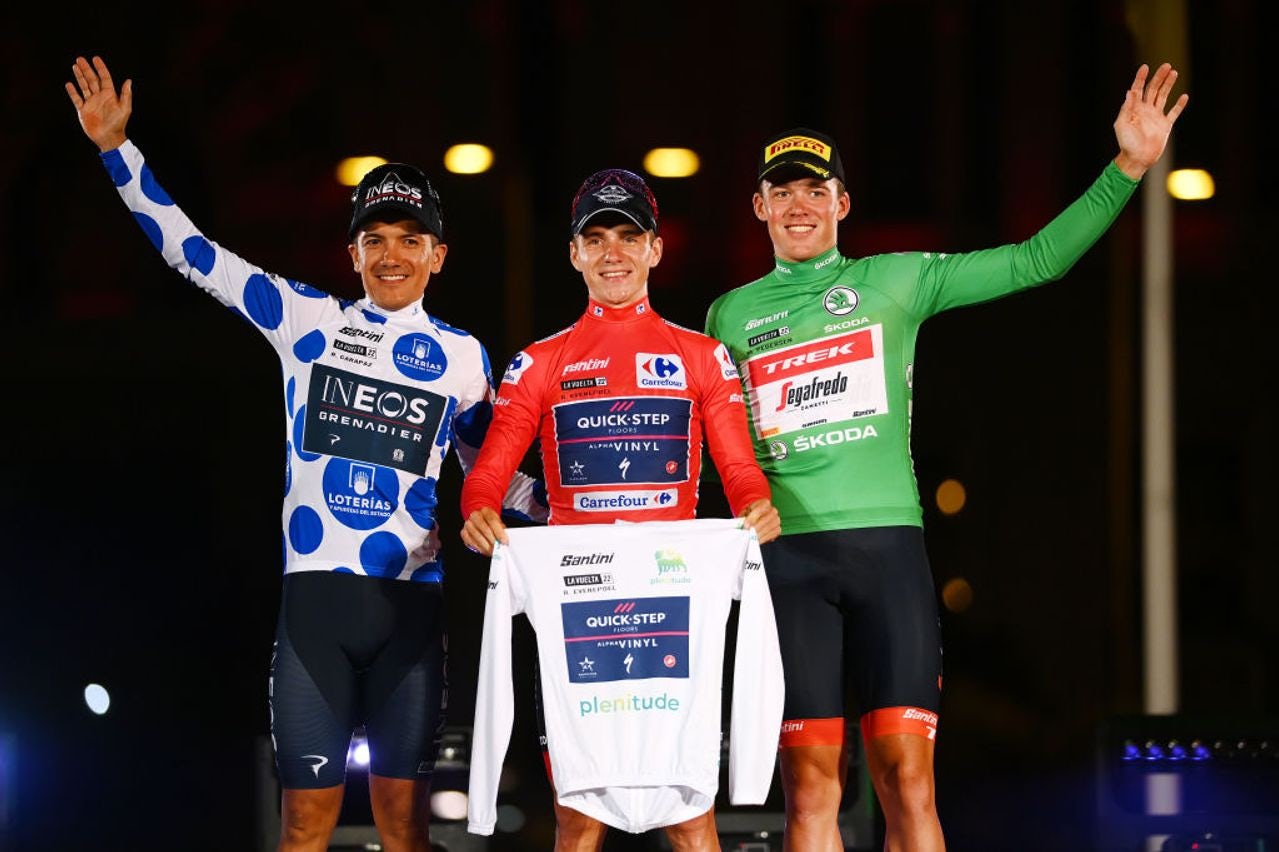



MAIN.jpg?w=600&auto=format)







.webp?w=600&auto=format)

